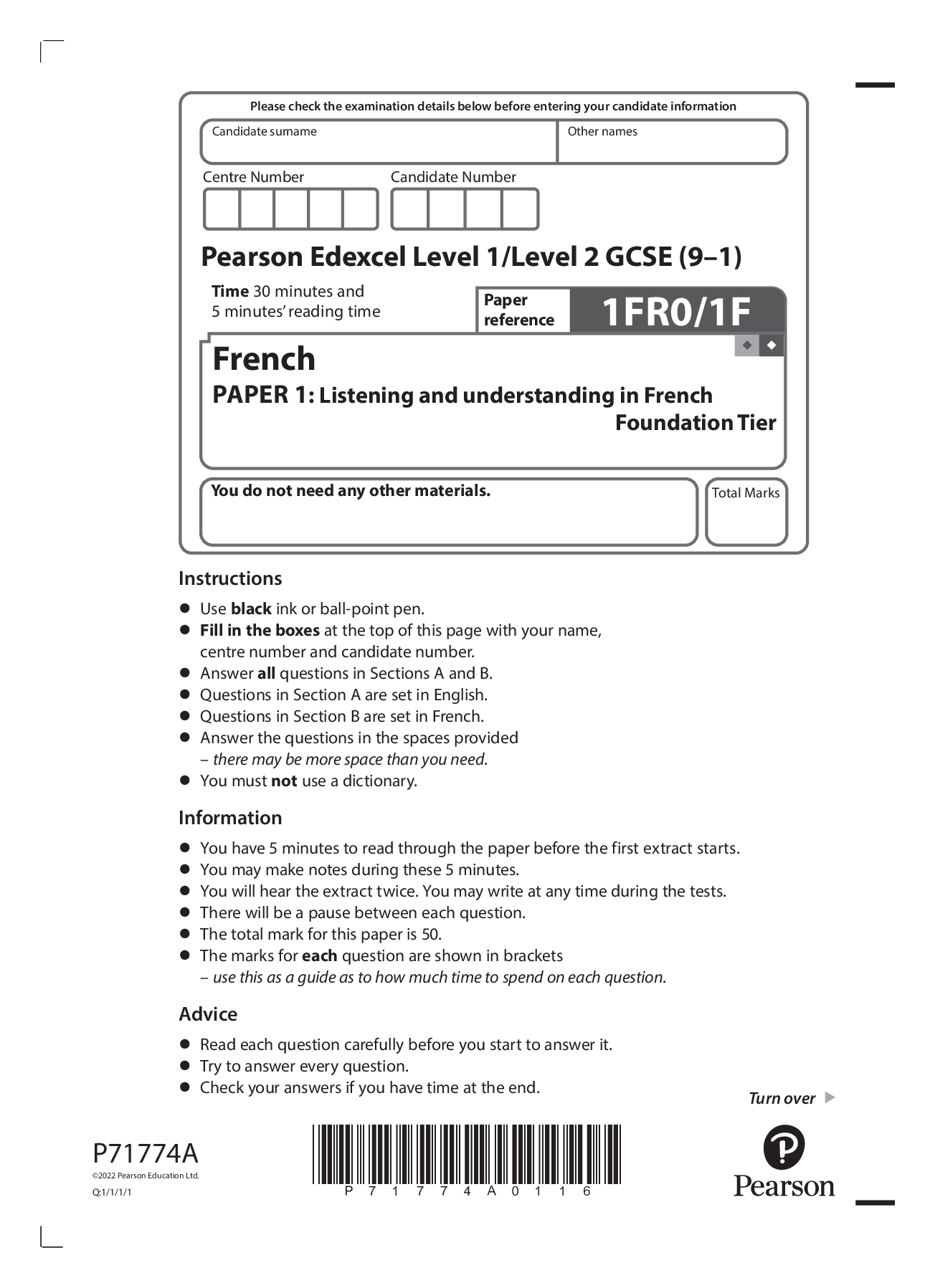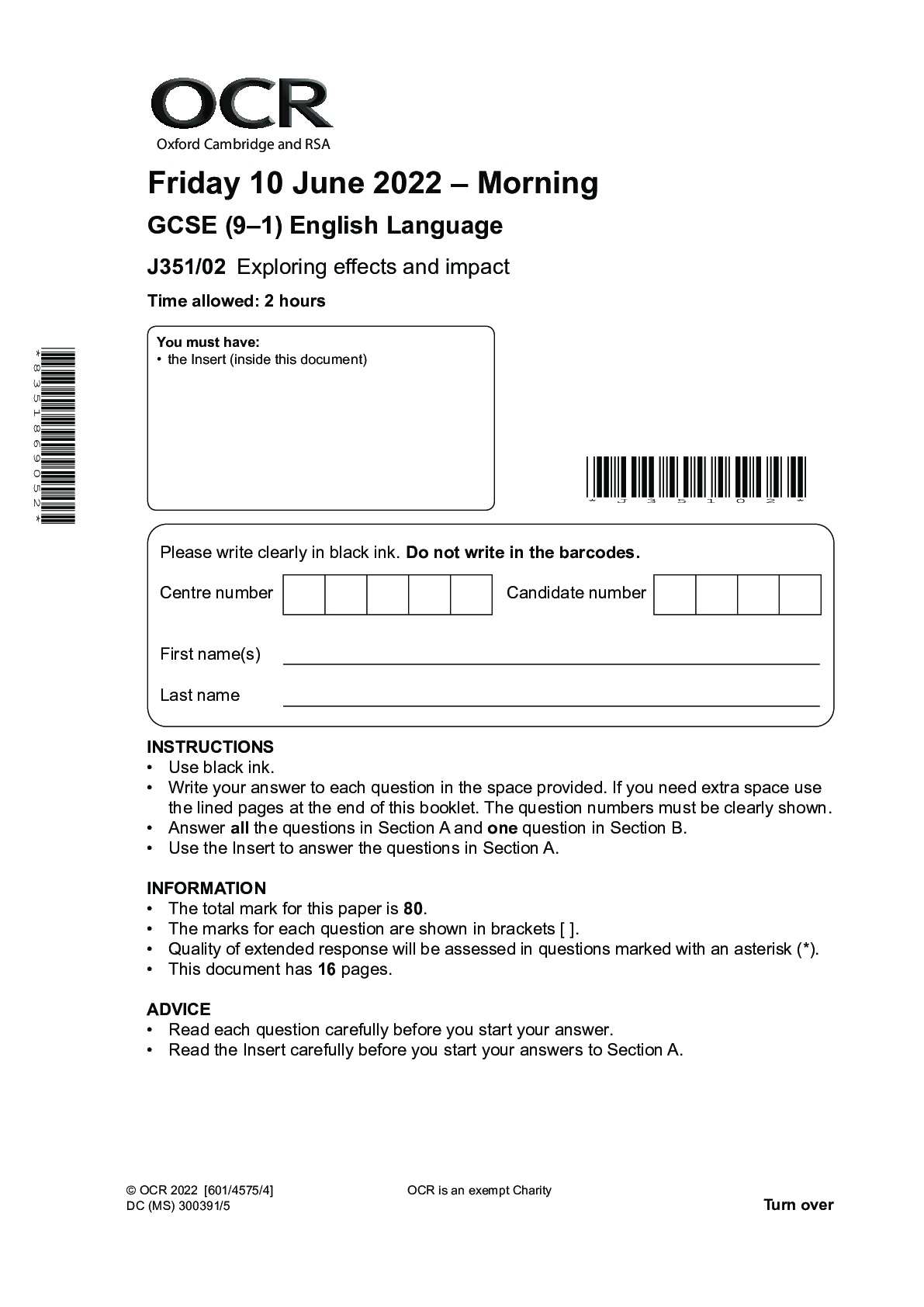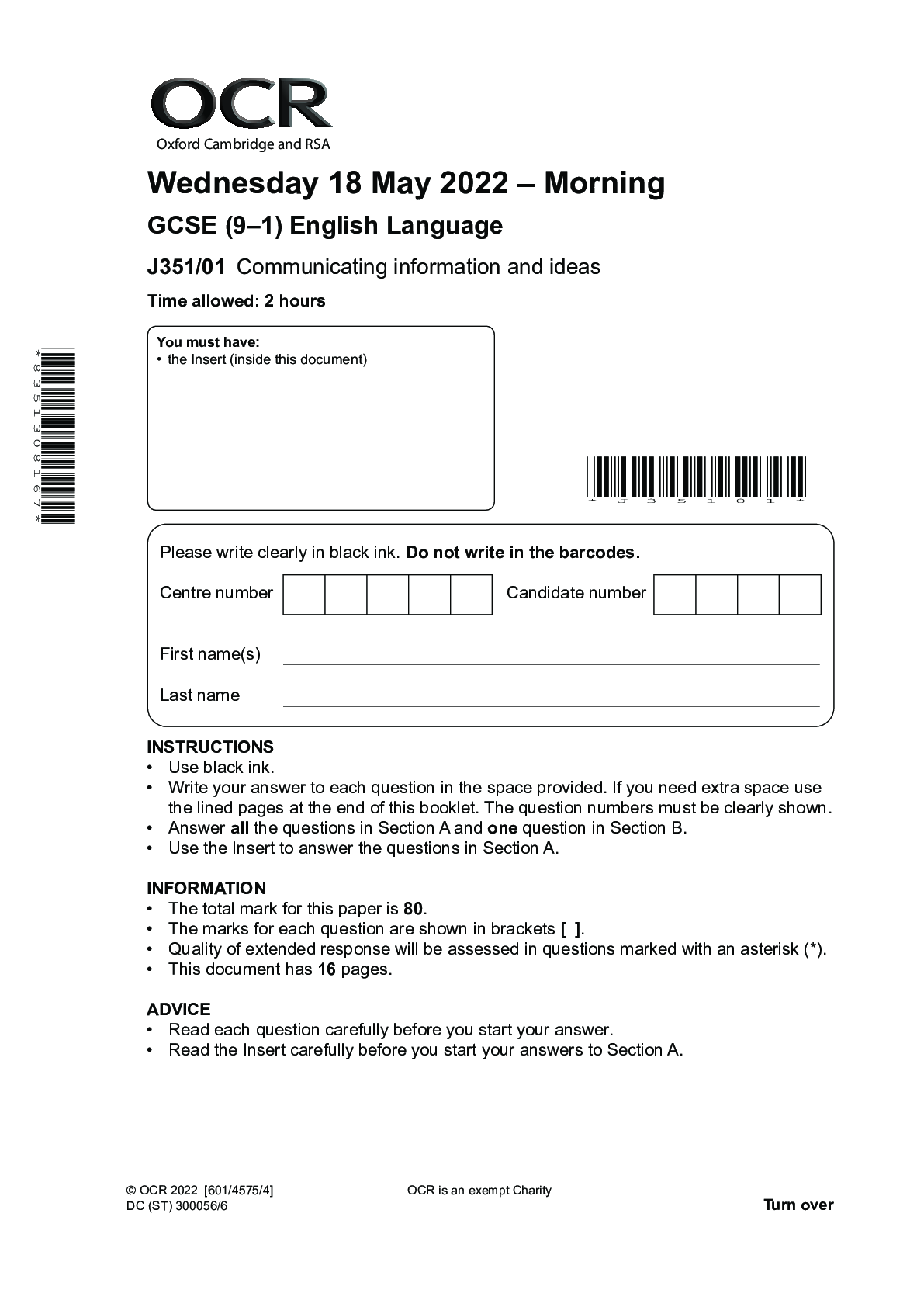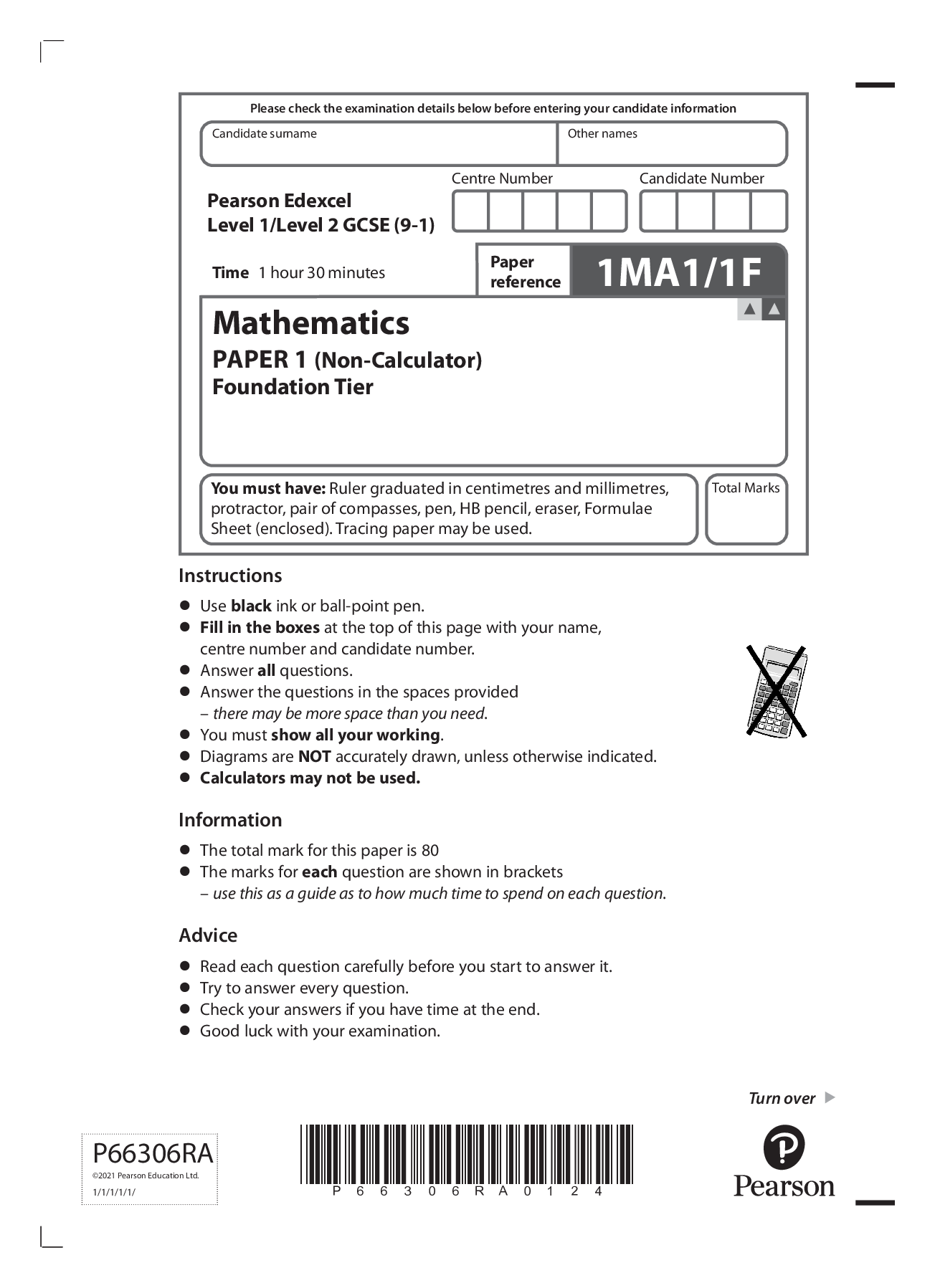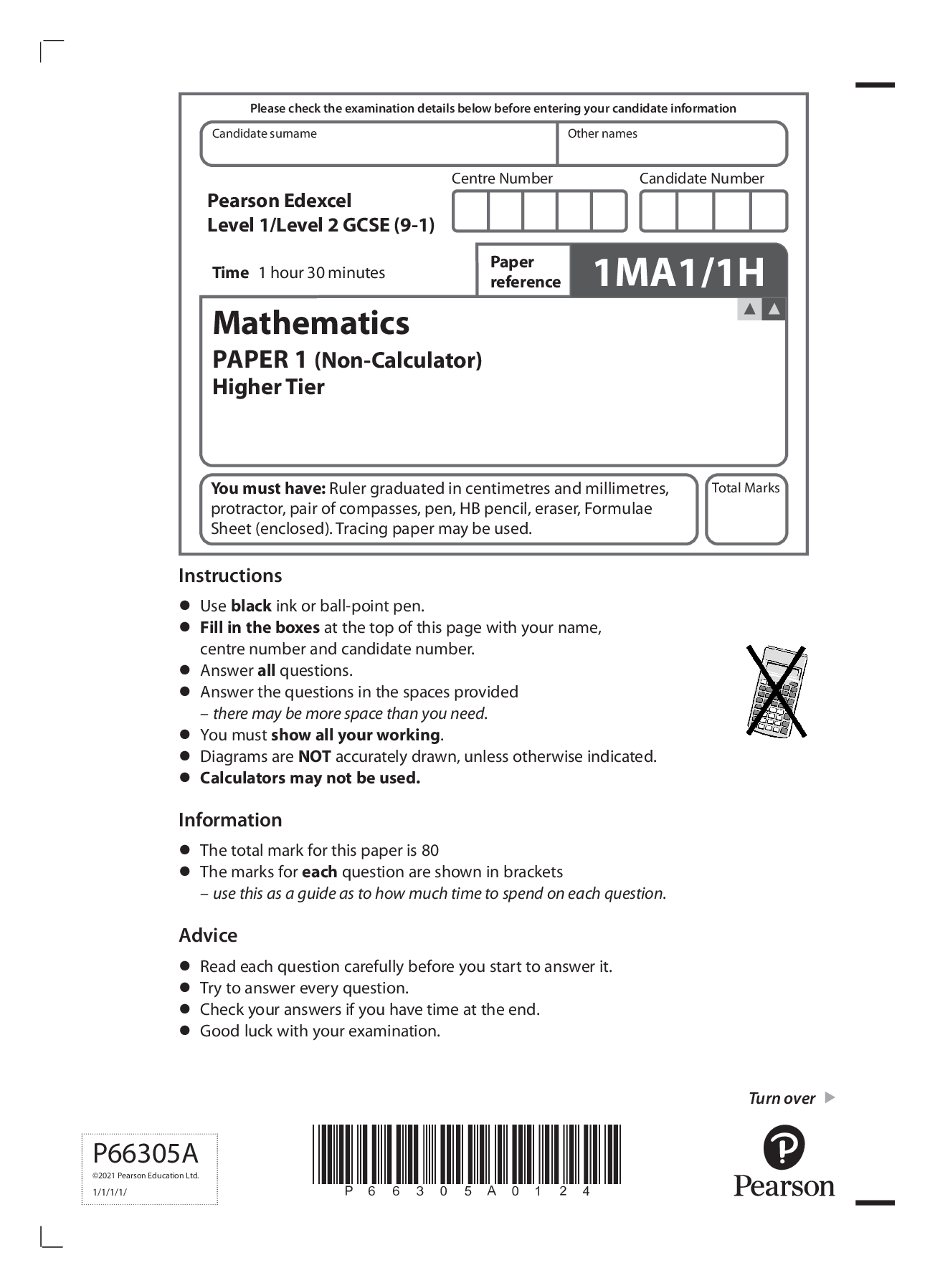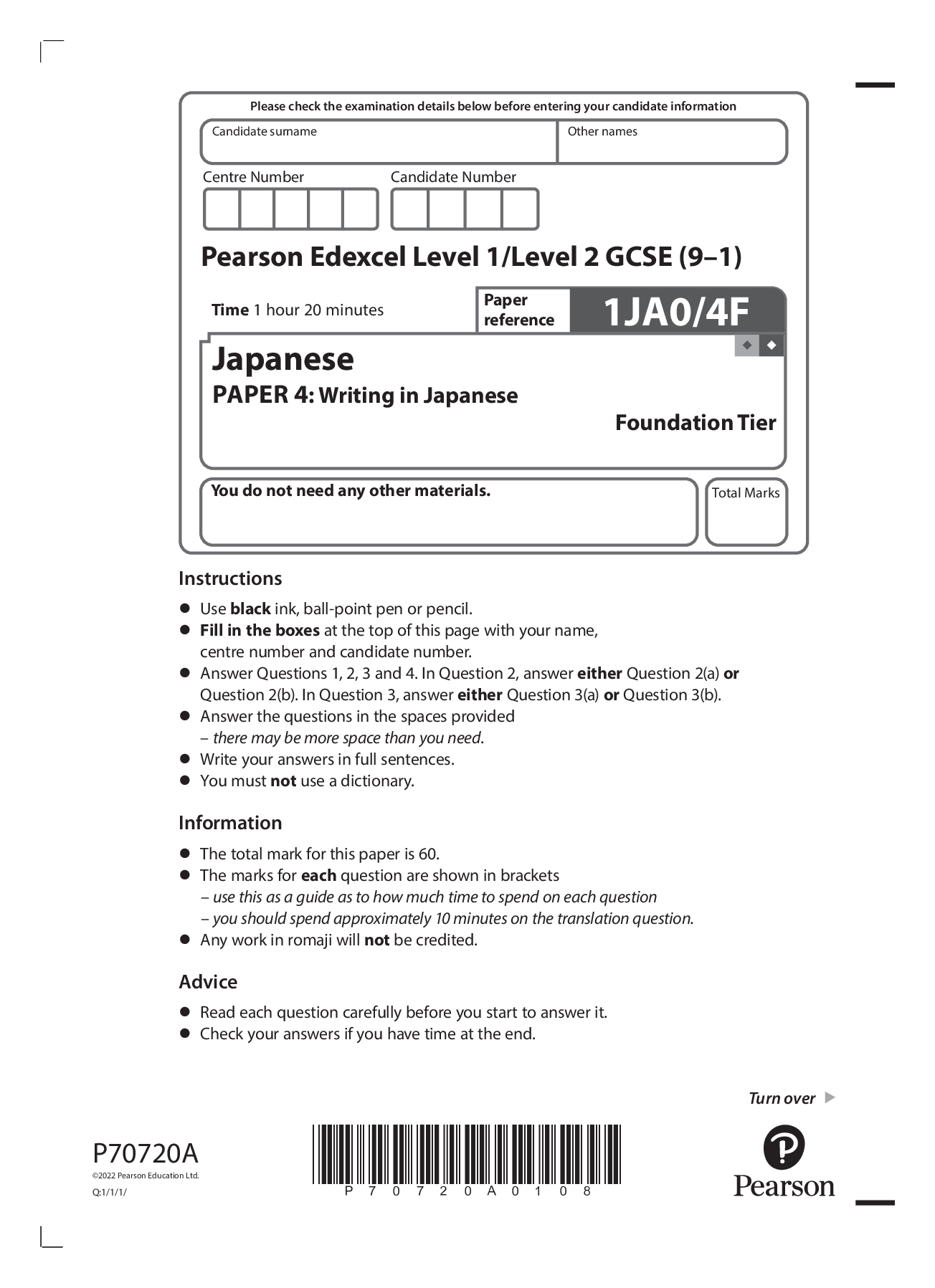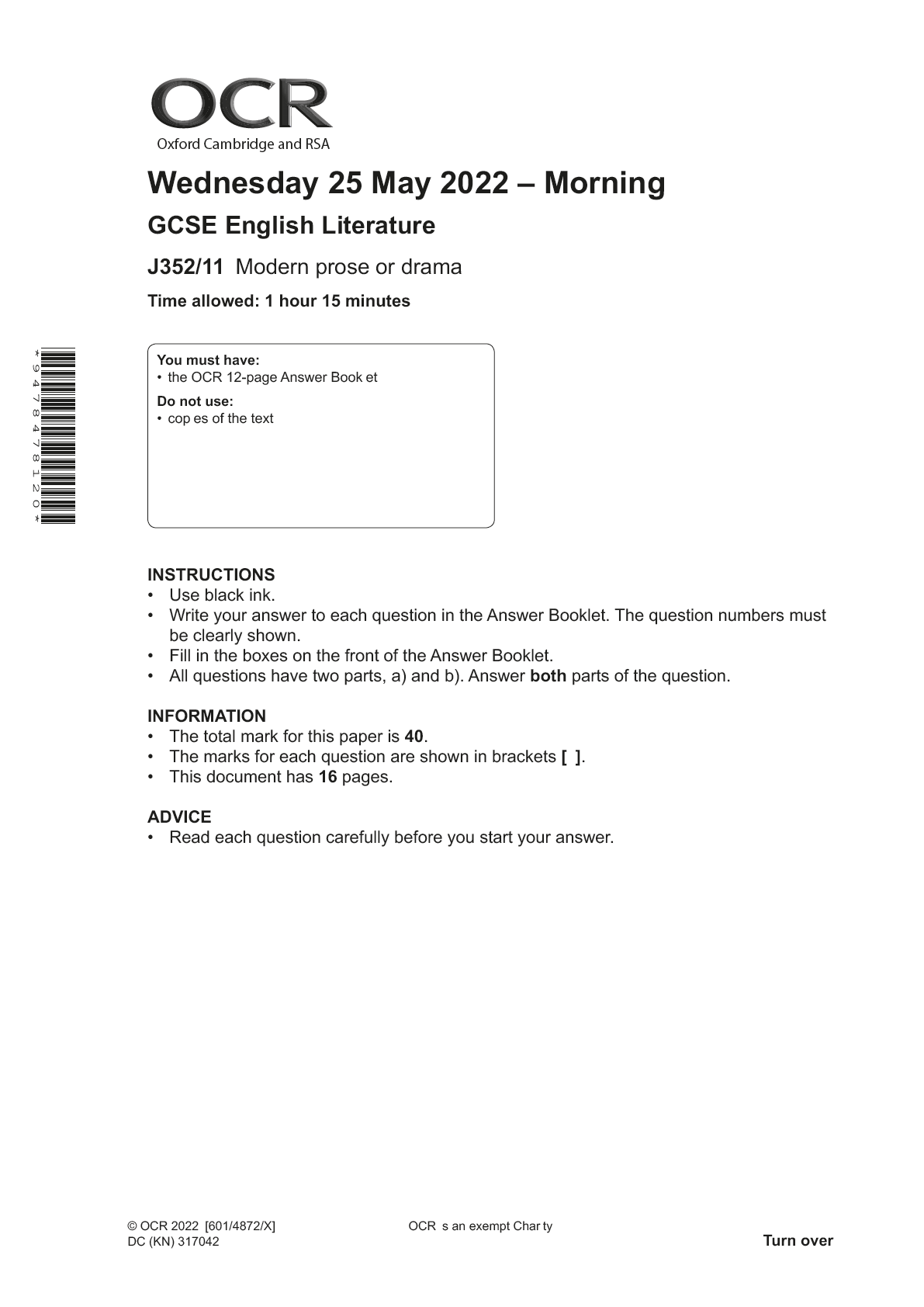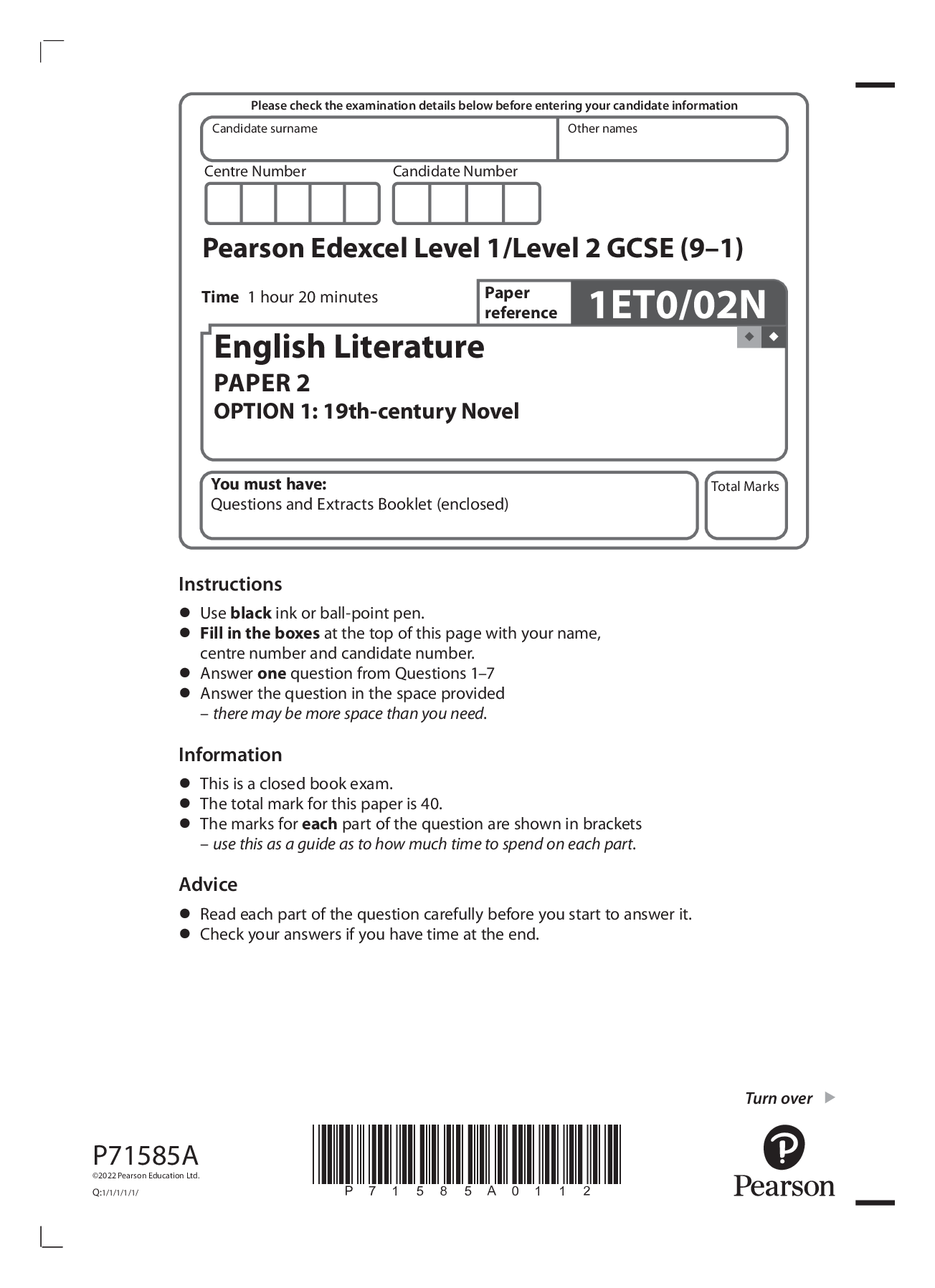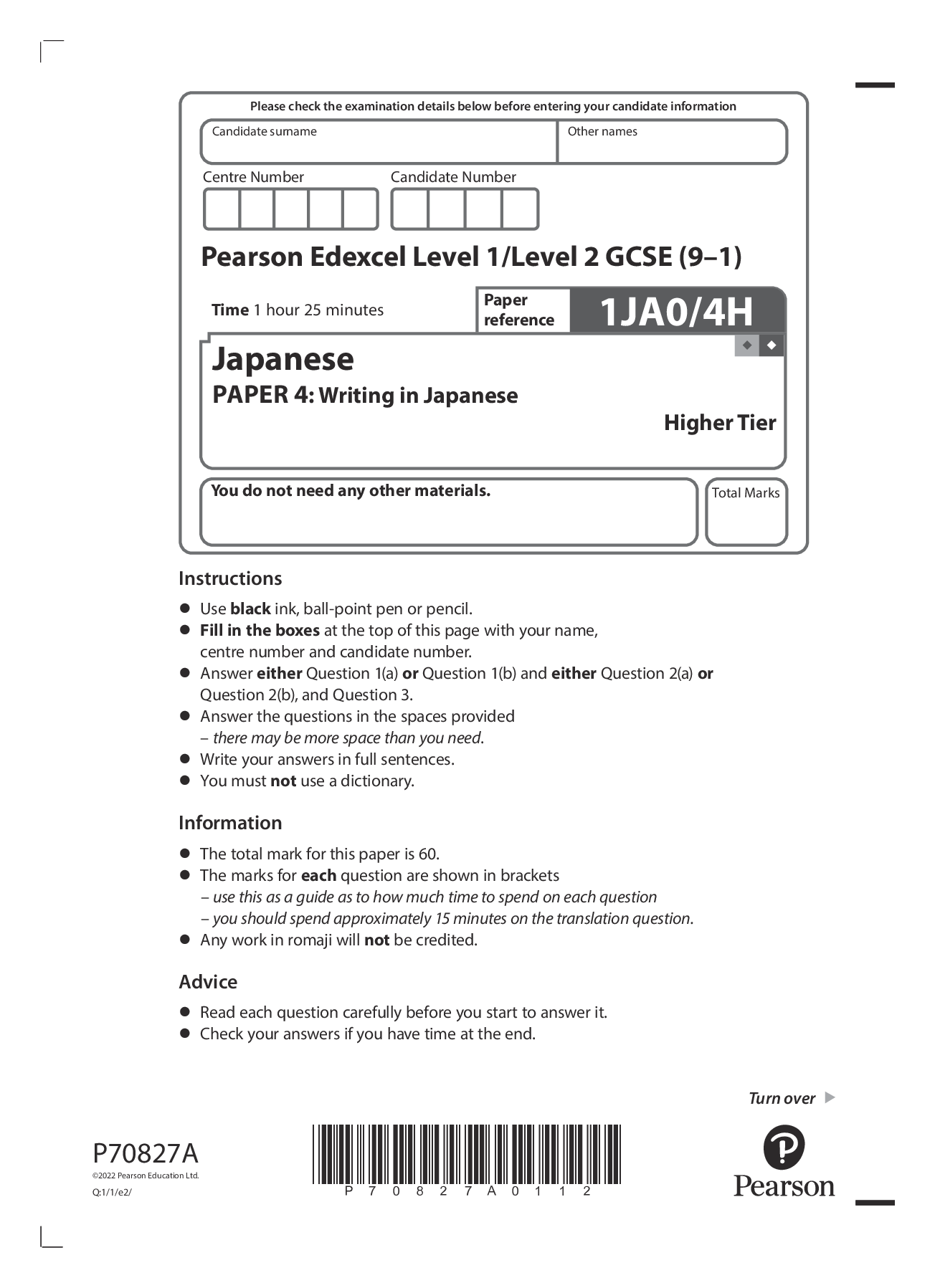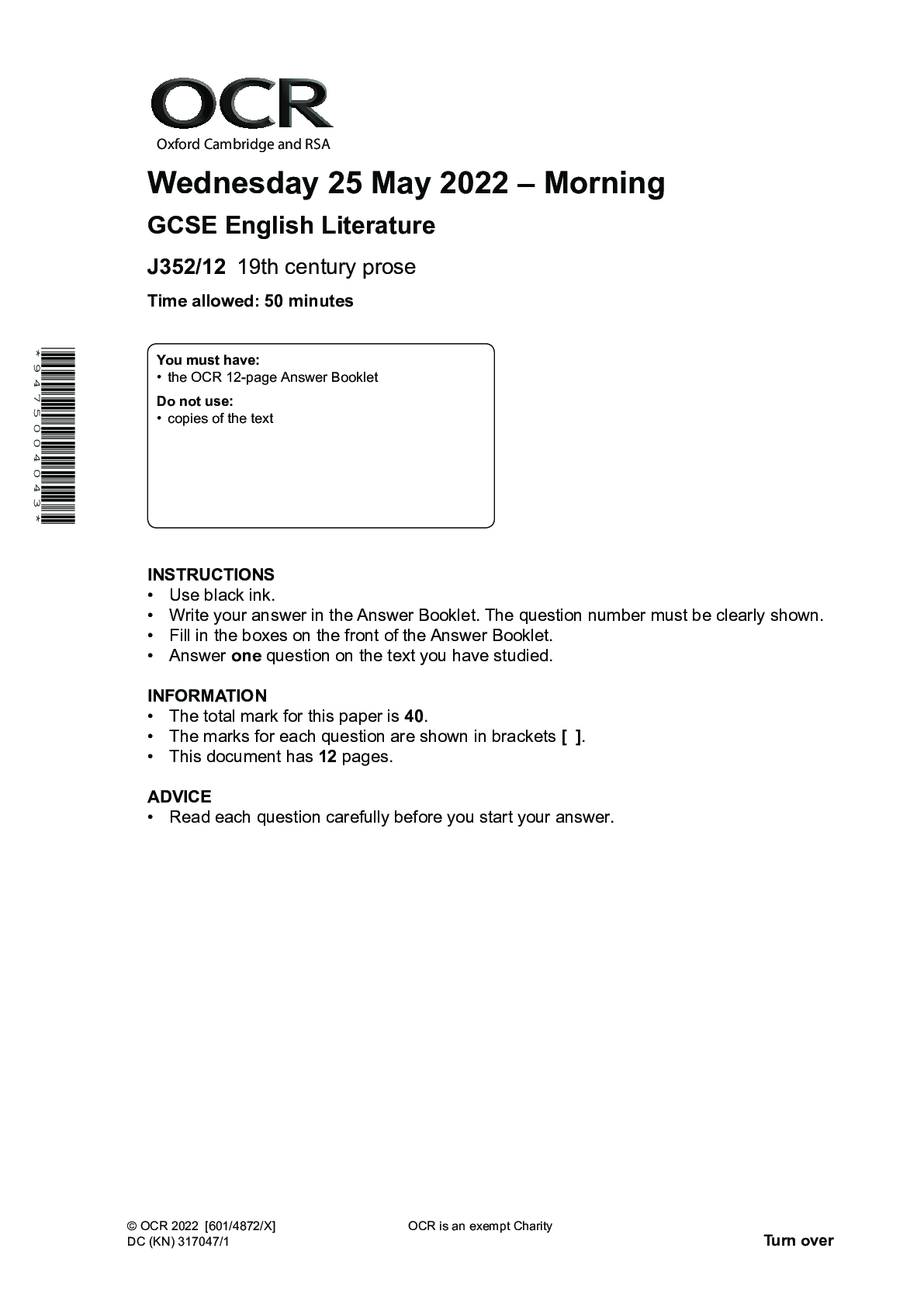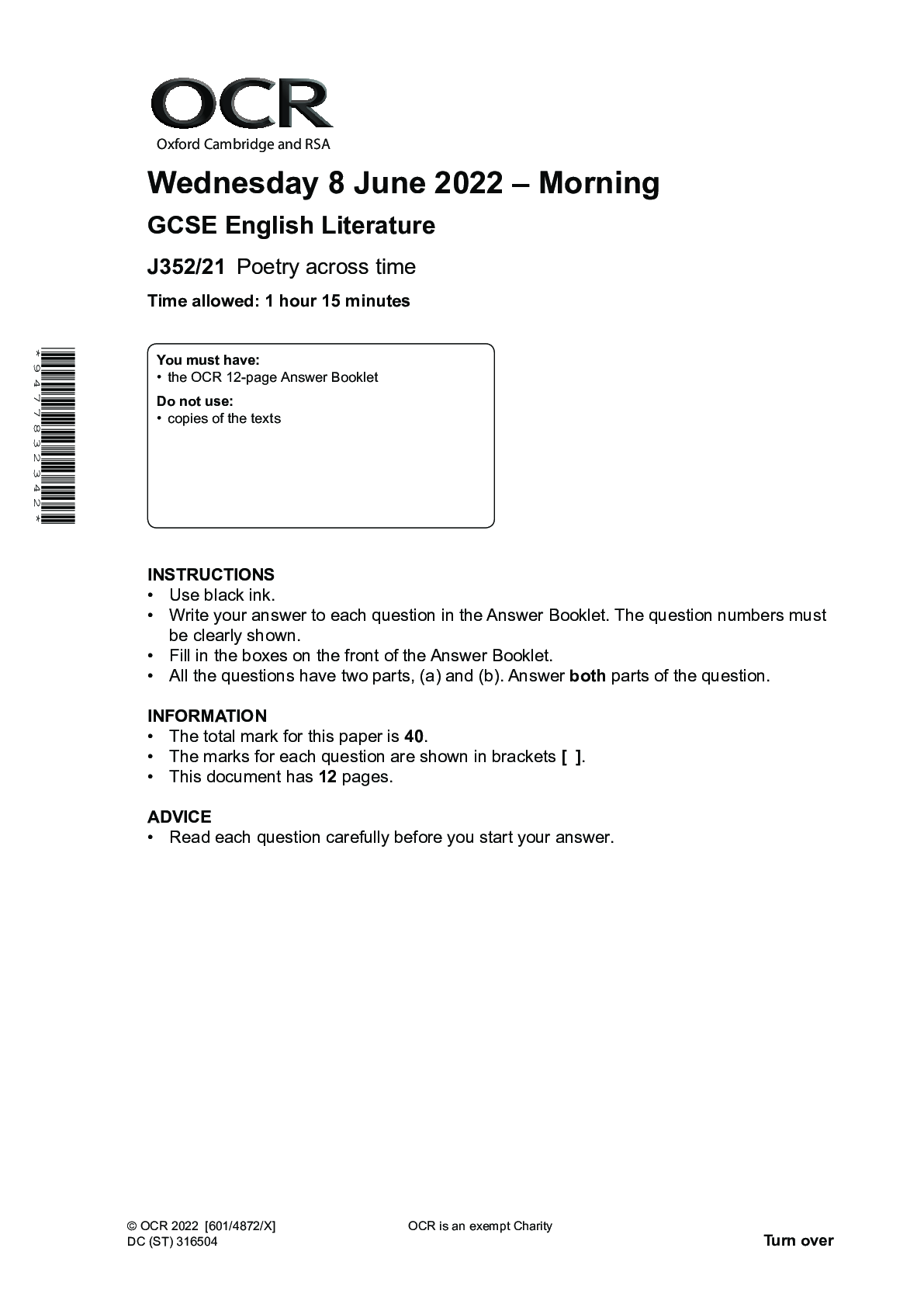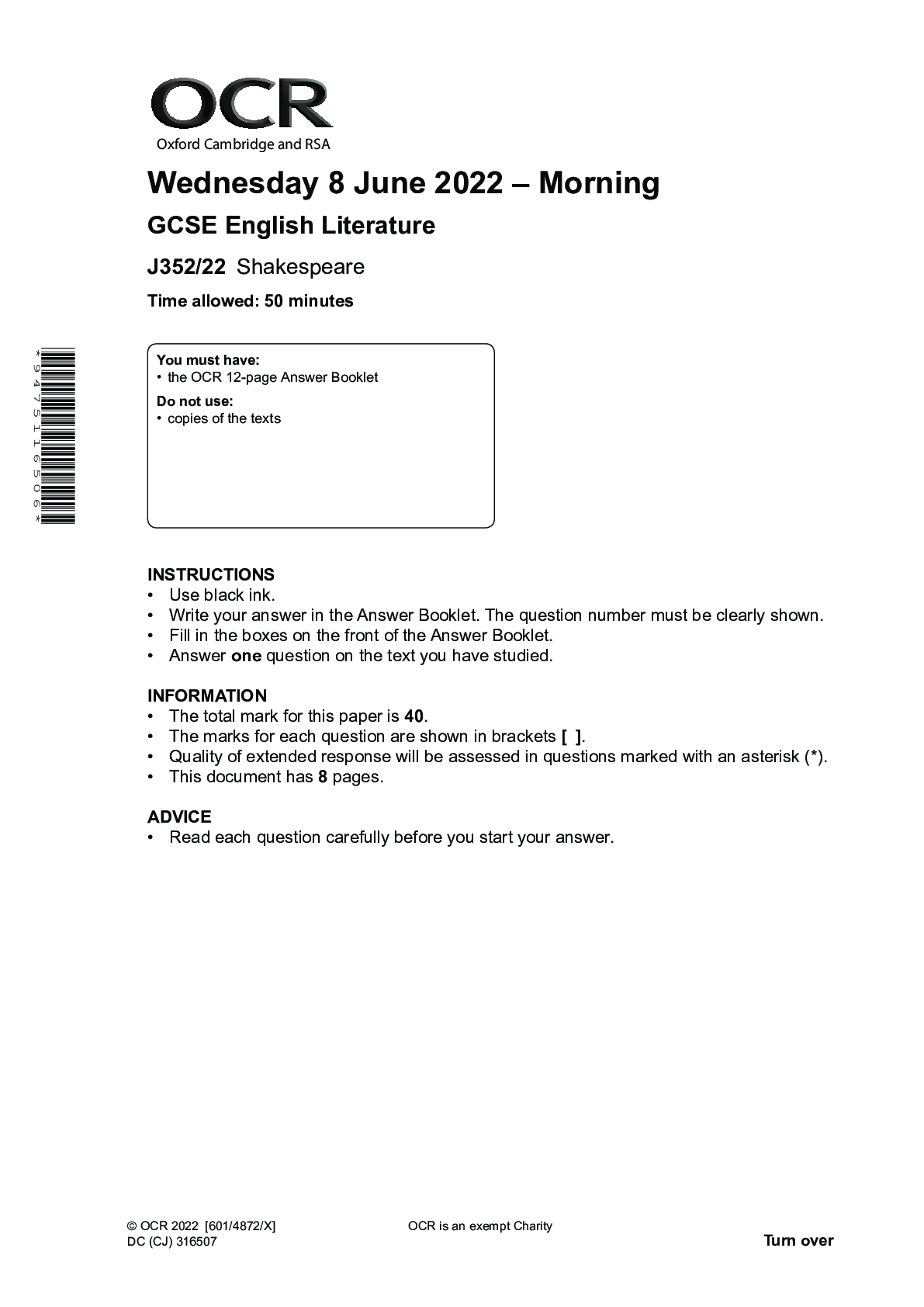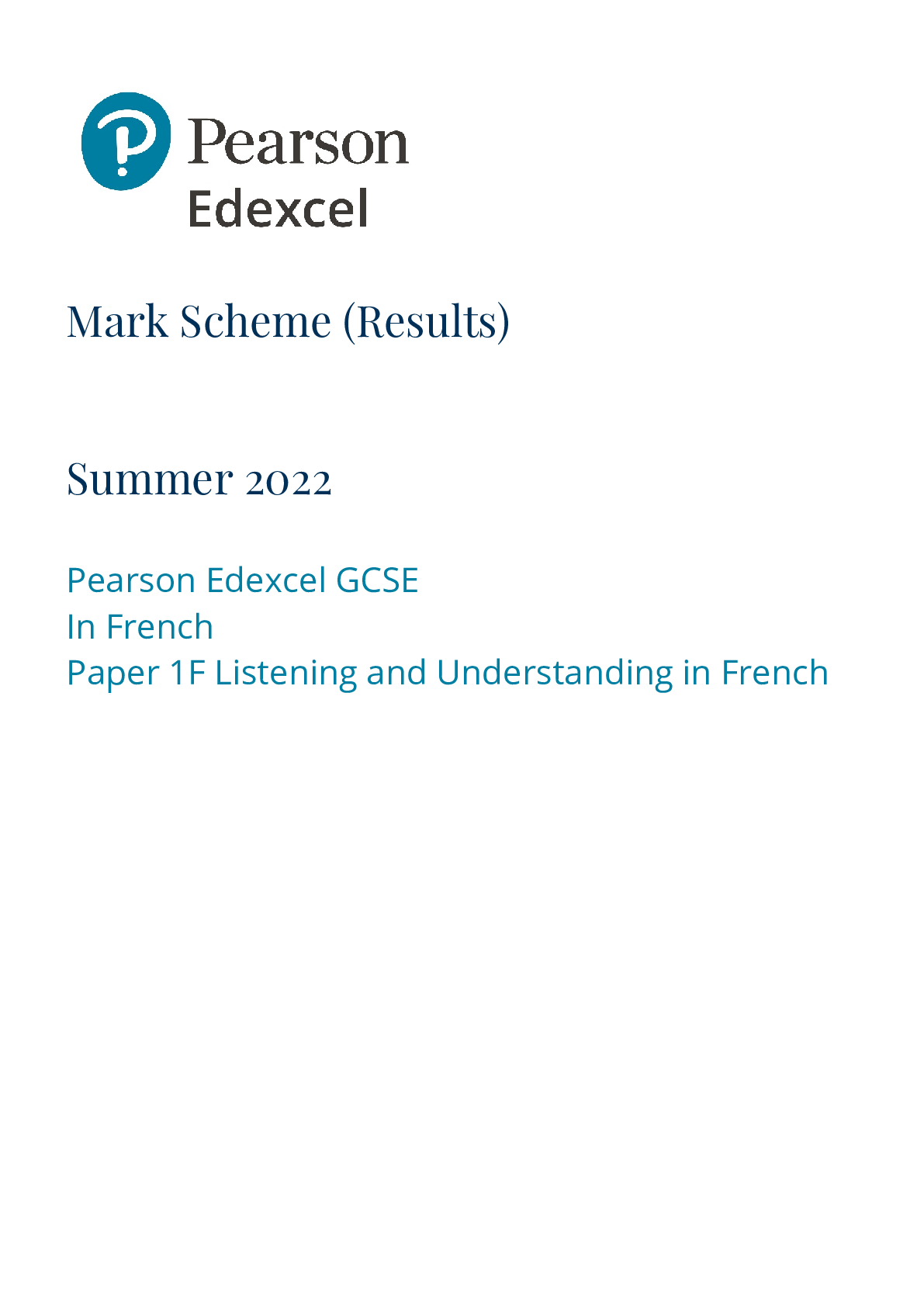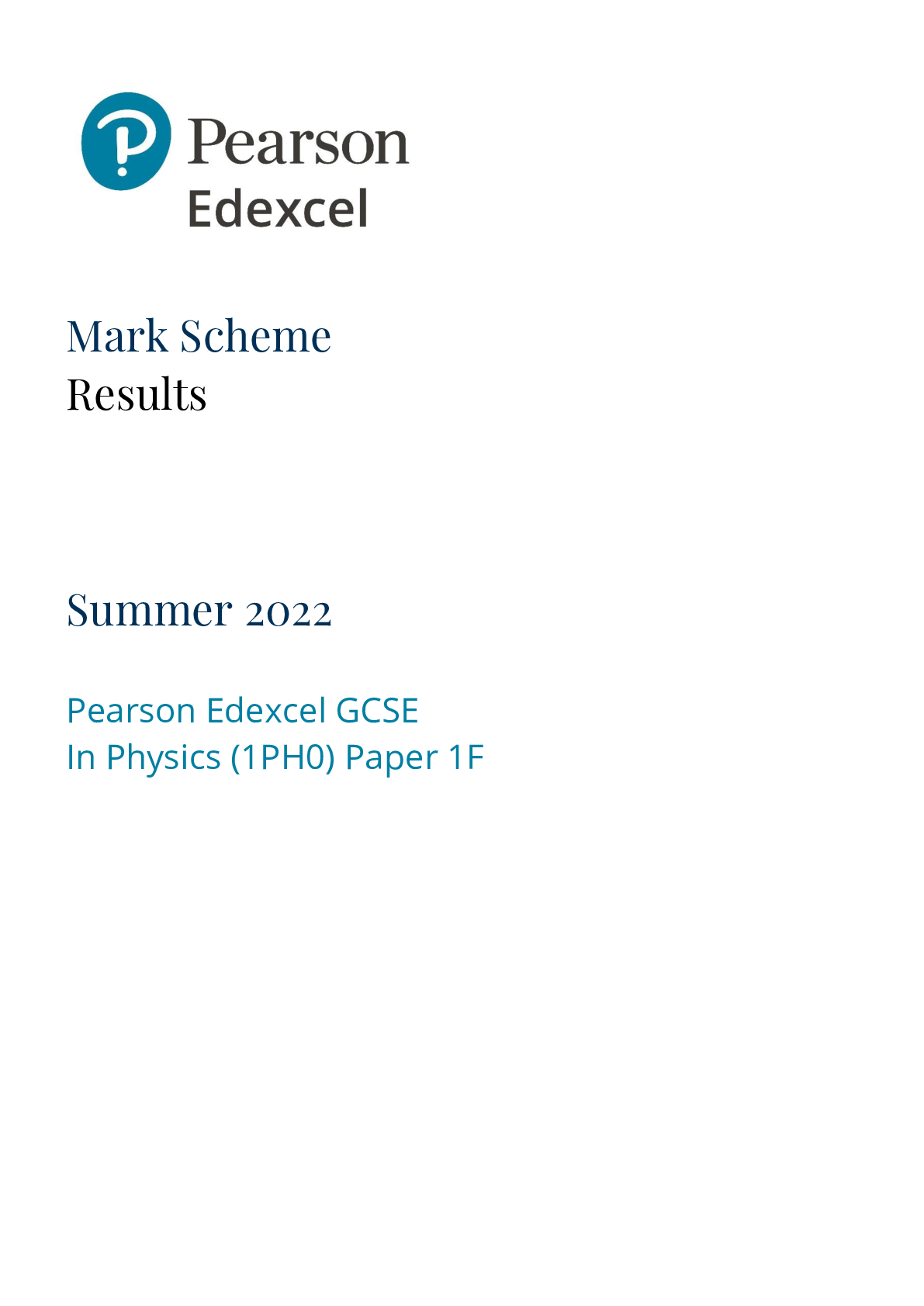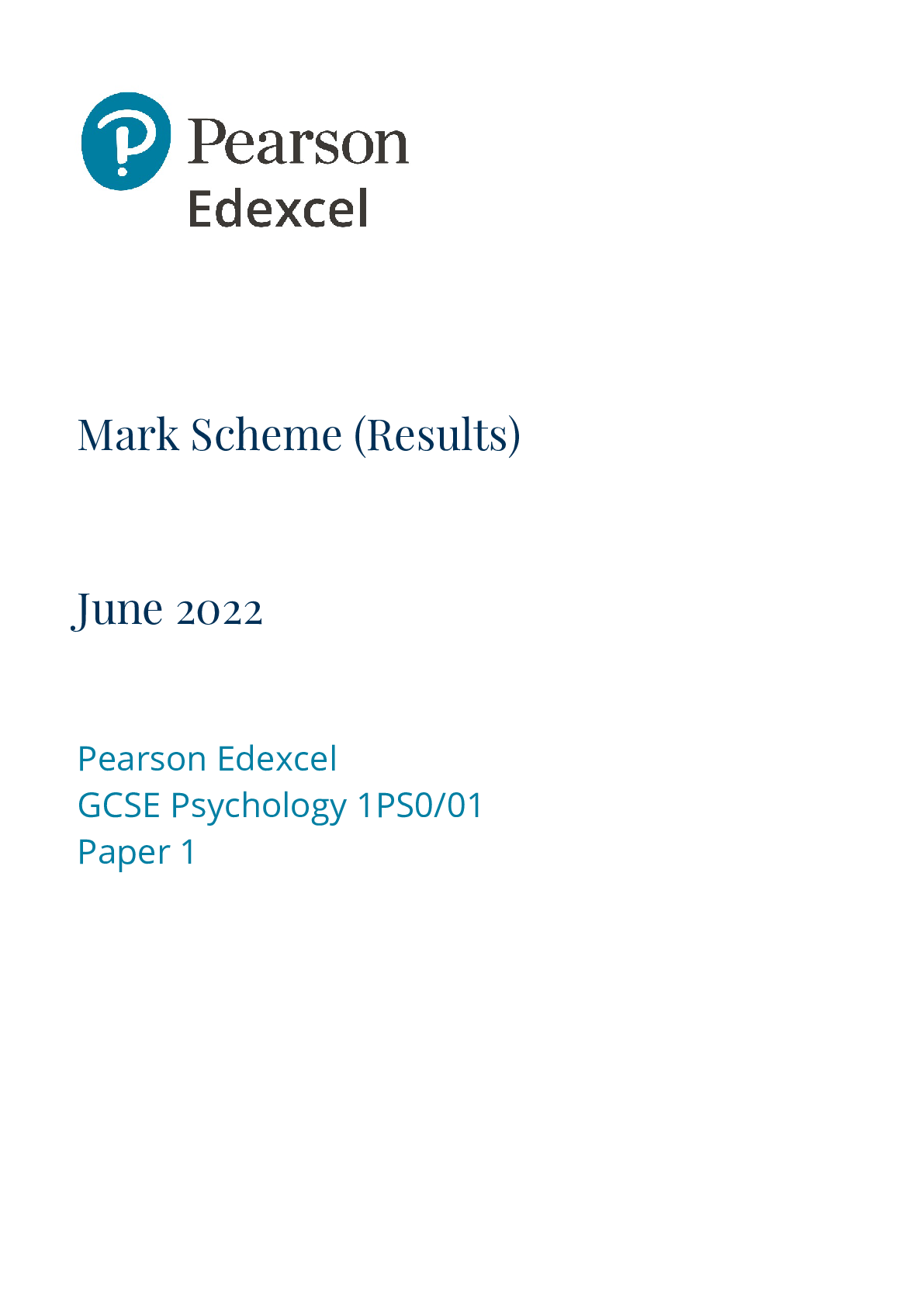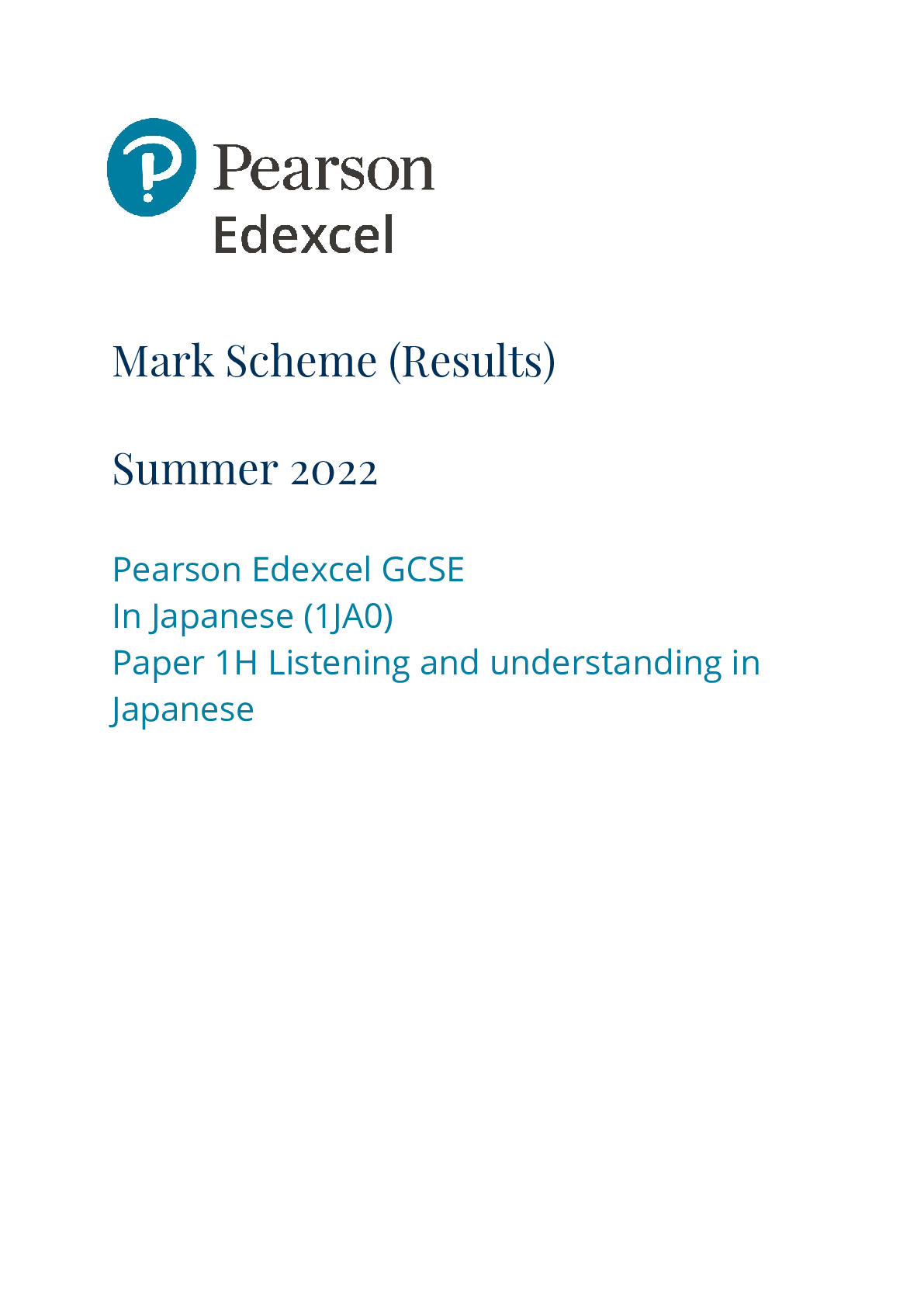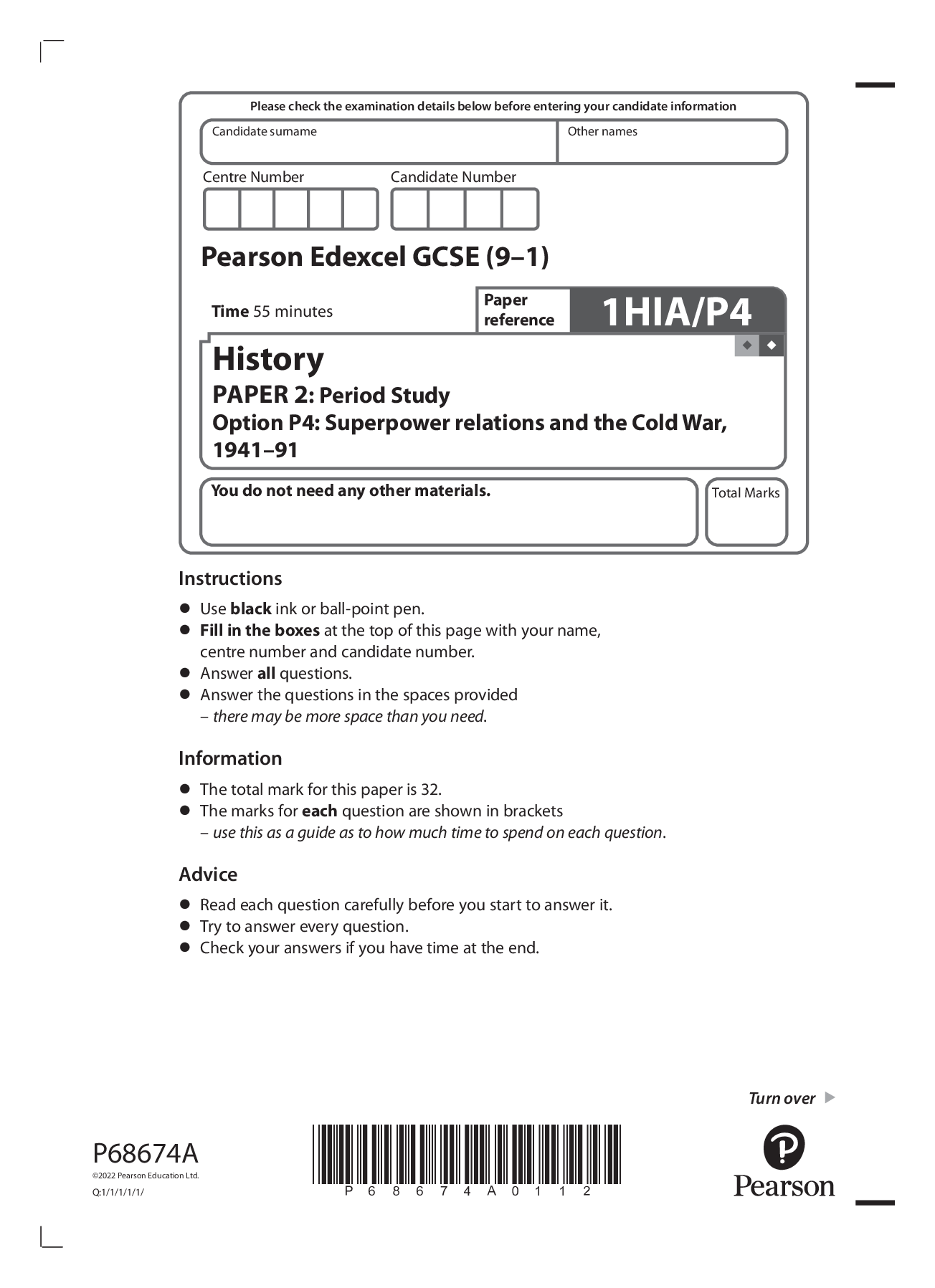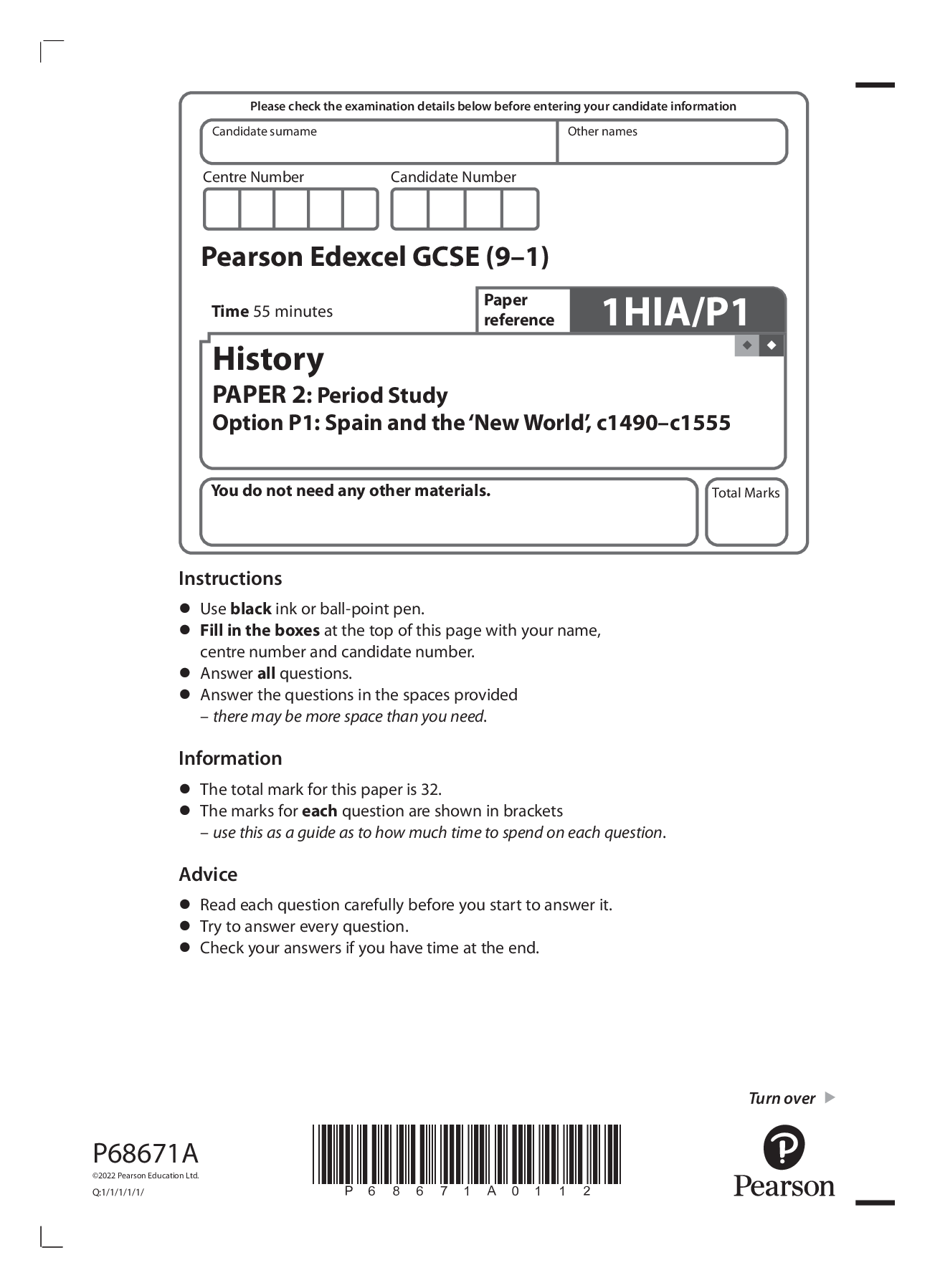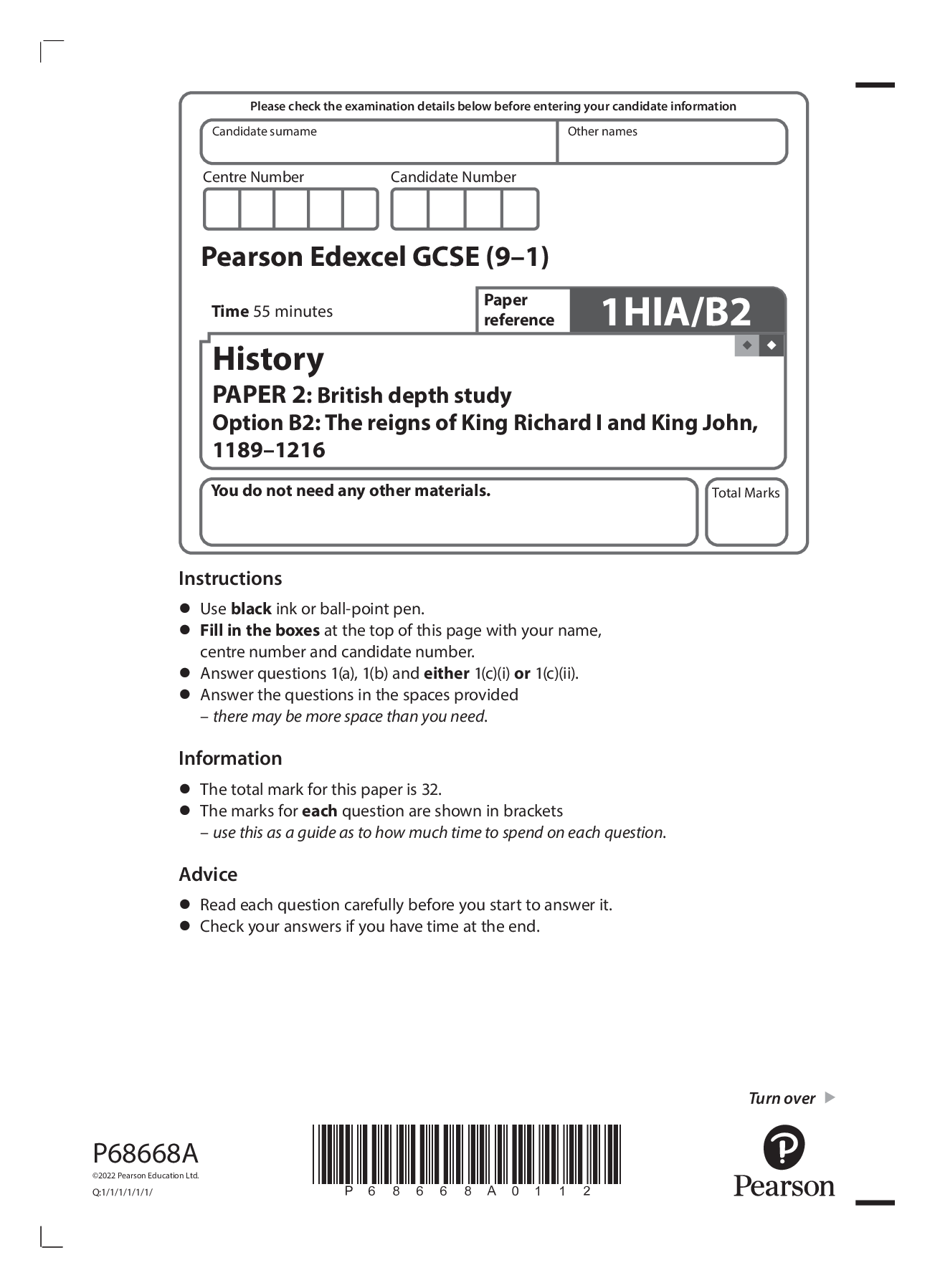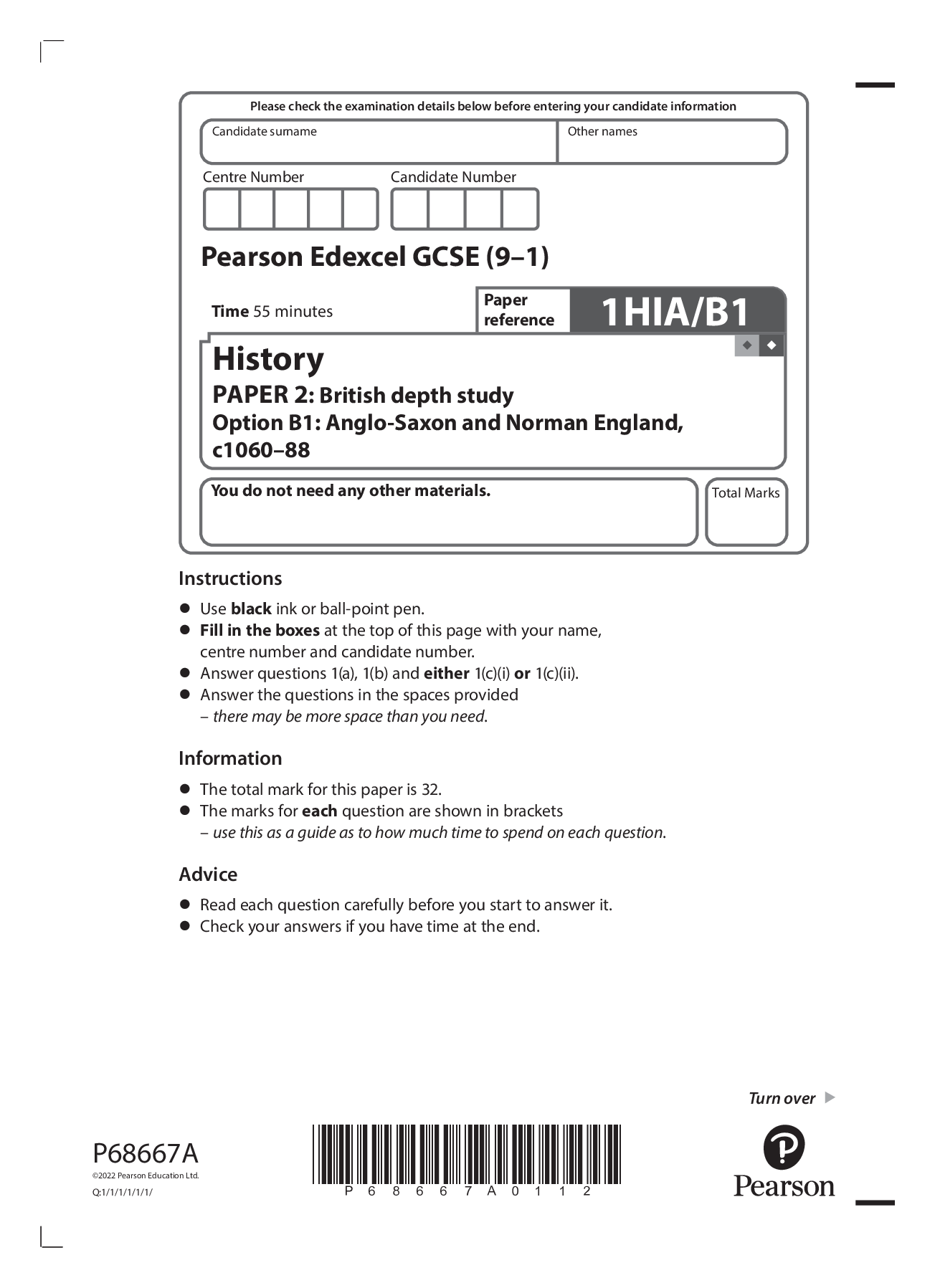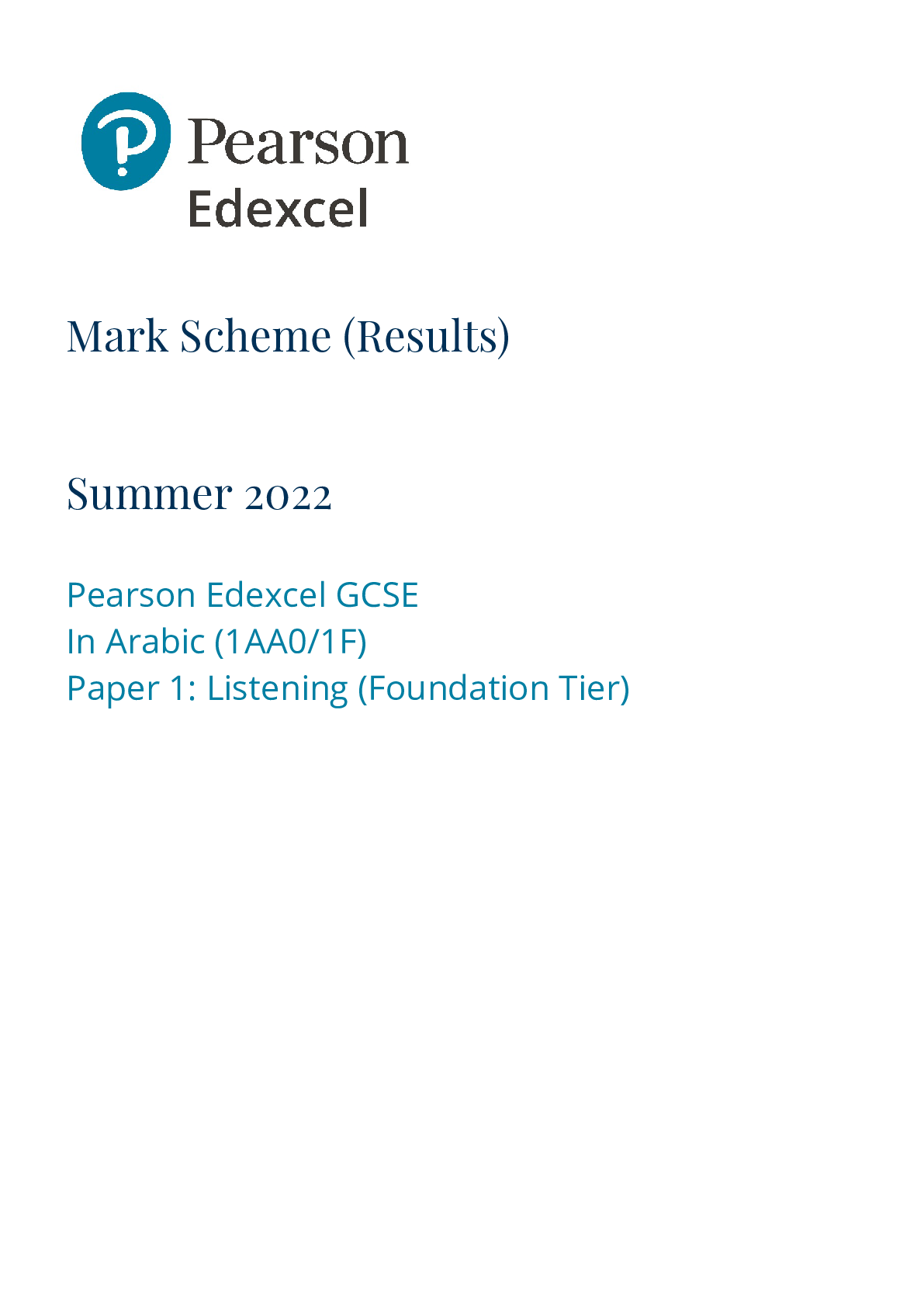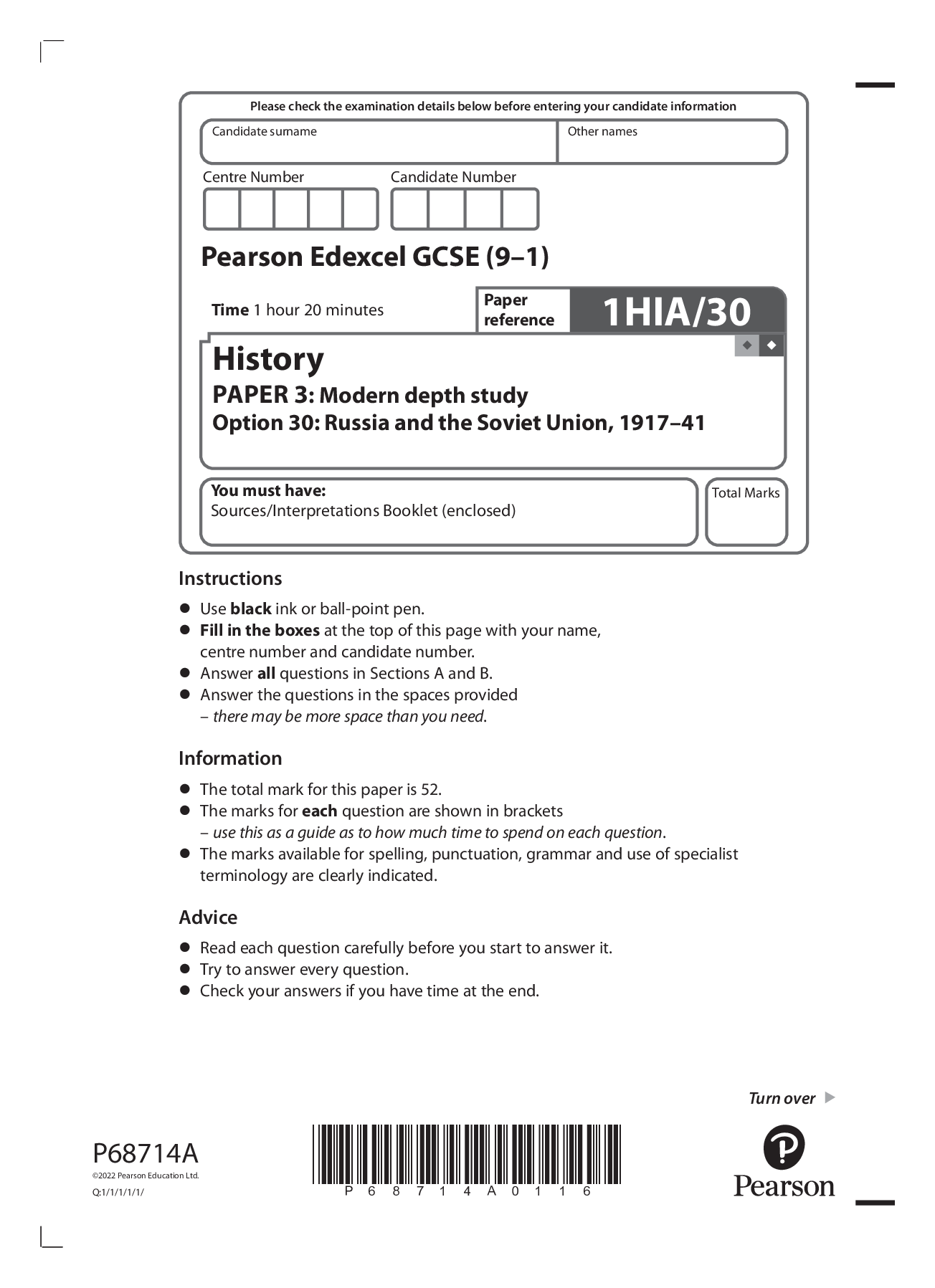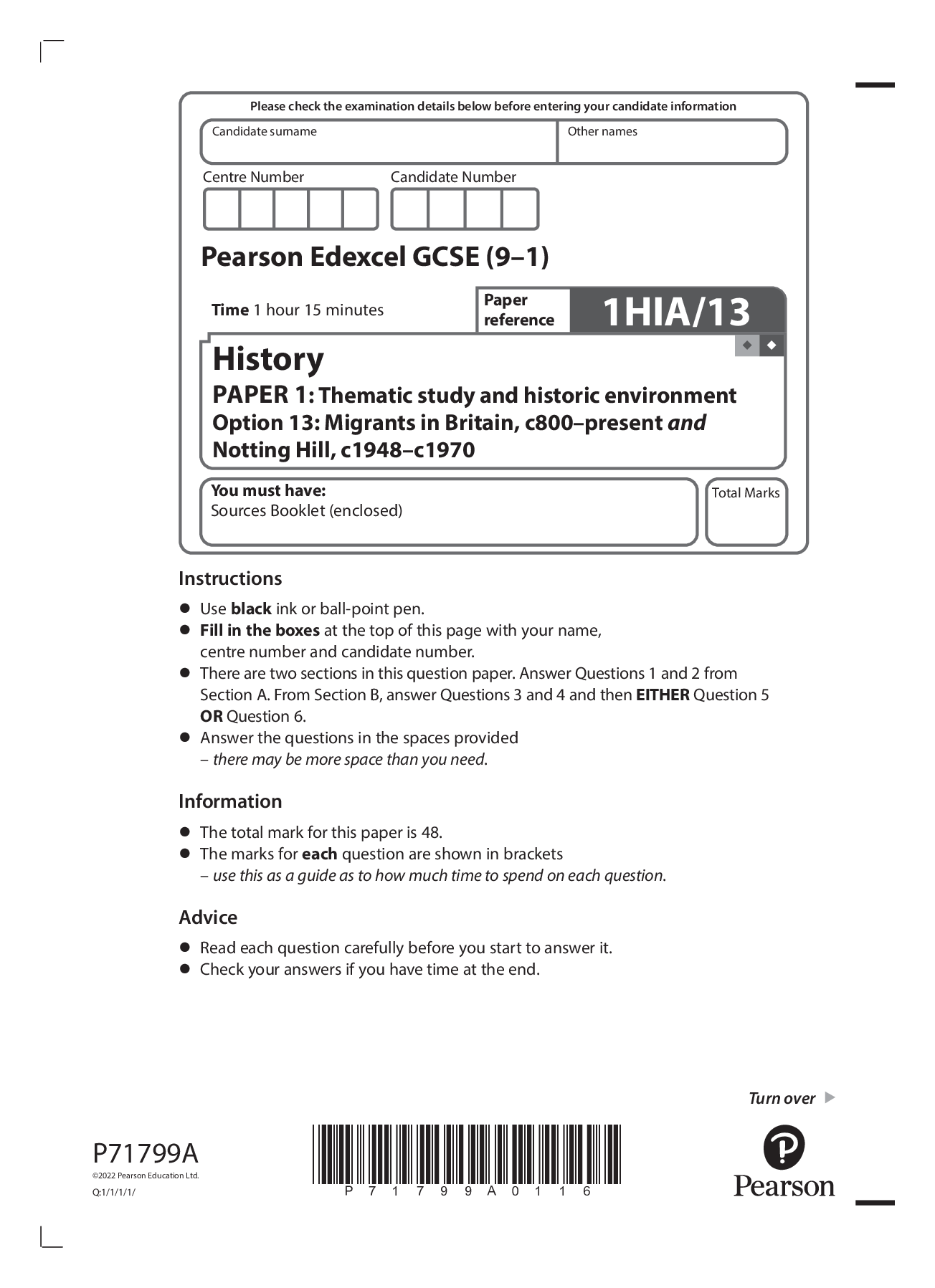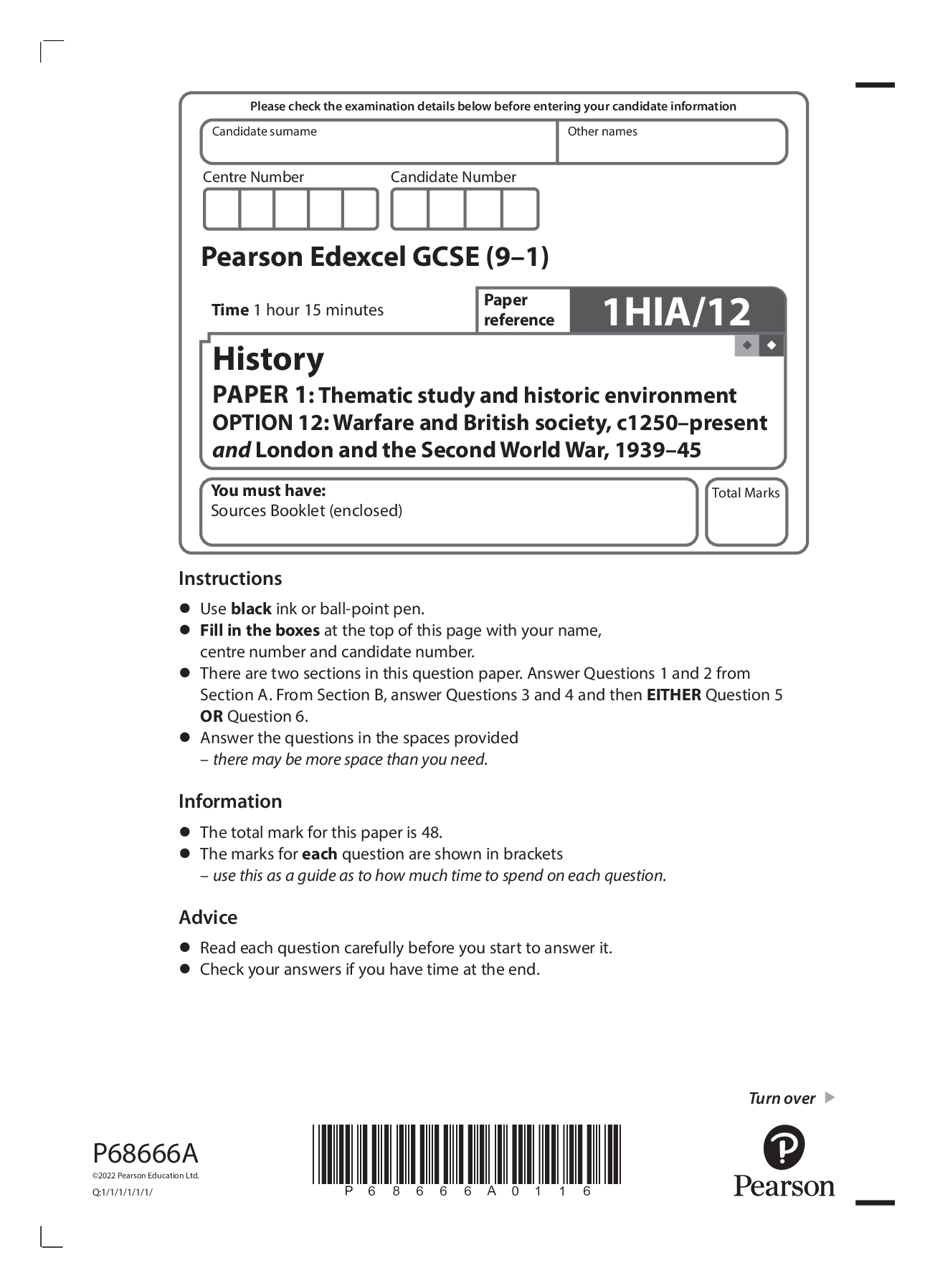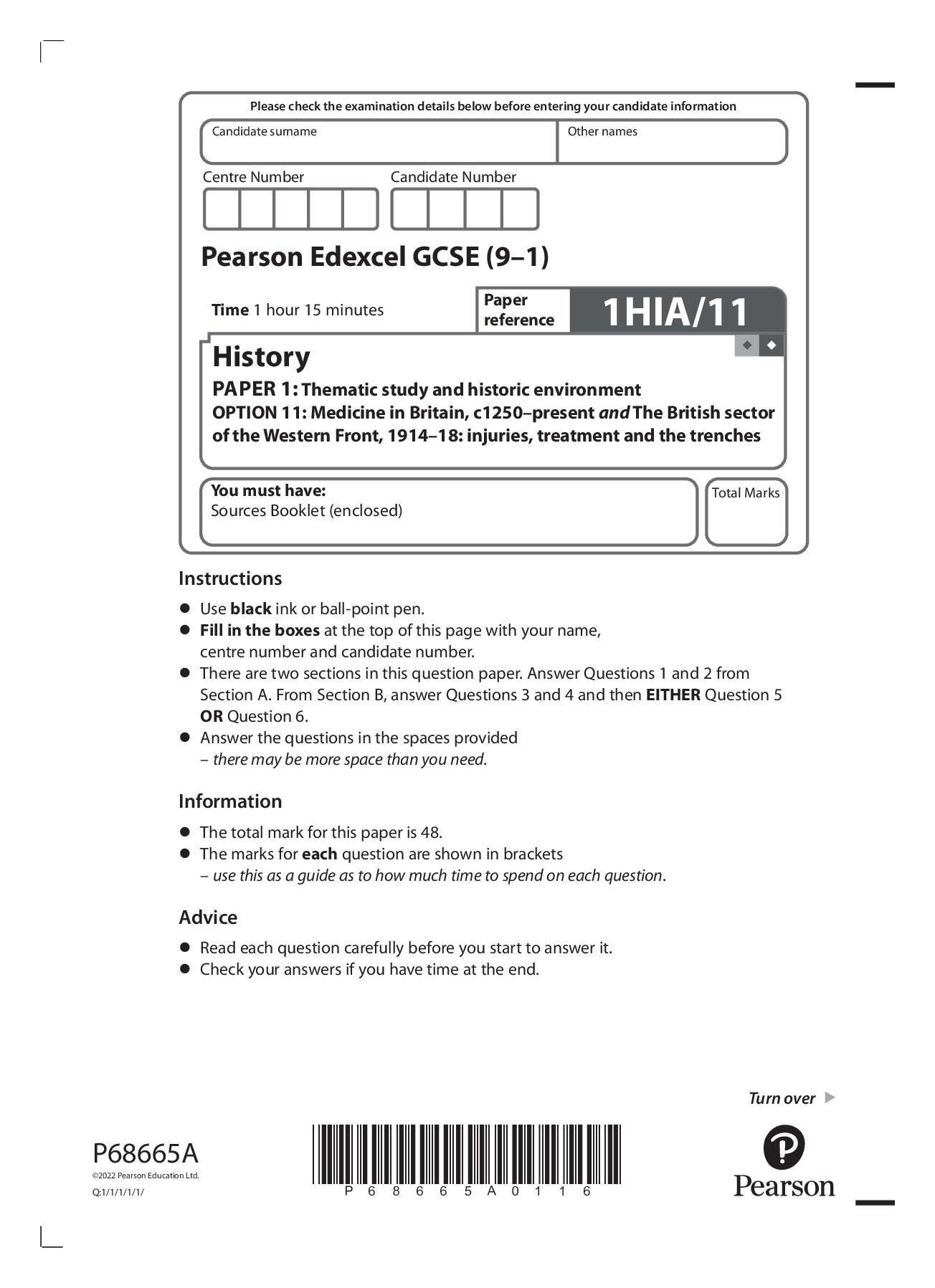Biology > QUESTION PAPER (QP) > Mark Scheme (Results) Summer 2022 Pearson Edexcel GCSE In Biology (1BI0) Paper 2F Edexcel and BTEC Q (All)
Mark Scheme (Results) Summer 2022 Pearson Edexcel GCSE In Biology (1BI0) Paper 2F Edexcel and BTEC Qualifications
Document Content and Description Below
Mark Scheme (Results) Summer 2022 Pearson Edexcel GCSE In Biology (1BI0) Paper 2F Edexcel and BTEC Qualifications Edexcel and BTEC qualifications are awarded by Pearson, the UK’s largest award... ing body. We provide a wide range of qualifications including academic, vocational, occupational and specific programmes for employers. For further information visit our qualifications websites at www.edexcel.com or www.btec.co.uk. Alternatively, you can get in touch with us using the details on our contact us page at www.edexcel.com/contactus. Pearson: helping people progress, everywhere Pearson aspires to be the world’s leading learning company. Our aim is to help everyone progress in their lives through education. We believe in every kind of learning, for all kinds of people, wherever they are in the world. We’ve been involved in education for over 150 years, and by working across 70 countries, in 100 languages, we have built an international reputation for our commitment to high standards and raising achievement through innovation in education. Find out more about how we can help you and your students at: www.pearson.com/uk Summer 2022 Publications Code 1BI0_2F_2206_MS All the material in this publication is copyright © Pearson Education Ltd 2022 General Marking Guidance • All candidates must receive the same treatment. Examiners must mark the first candidate in exactly the same way as they mark the last. • Mark schemes should be applied positively. Candidates must be rewarded for what they have shown they can do rather than penalised for omissions. • Examiners should mark according to the mark scheme not according to their perception of where the grade boundaries may lie. • There is no ceiling on achievement. All marks on the mark scheme should be used appropriately. • All the marks on the mark scheme are designed to be awarded. Examiners should always award full marks if deserved, i.e. if the answer matches the mark scheme. Examiners should also be prepared to award zero marks if the candidate’s response is not worthy of credit according to the mark scheme. • Where some judgement is required, mark schemes will provide the principles by which marks will be awarded and exemplification may be limited. • When examiners are in doubt regarding the application of the mark scheme to a candidate’s response, the team leader must be consulted. • Crossed out work should be marked UNLESS the candidate has replaced it with an alternative response. Mark schemes have been developed so that the rubrics of each mark scheme reflects the characteristics of the skills within the AO being targeted and the requirements of the command word. So for example the command word ‘Explain’ requires an identification of a point and then reasoning/justification of the point. Explain questions can be asked across all AOs. The distinction comes whether the identification is via a judgment made to reach a conclusion, or, making a point through application of knowledge to reason/justify the point made through application of understanding. It is the combination and linkage of the marking points that is needed to gain full marks. When marking questions with a ‘describe’ or ‘explain’ command word, the detailed marking guidance below should be consulted to ensure consistency of marking. Assessment Objective Command Word Strand Element Describe Explain AO1 An answer that combines the marking points to provide a logical description An explanation that links identification of a point with reasoning/justification(s) as required AO2 An answer that combines the marking points to provide a logical description, showing application of knowledge and understanding An explanation that links identification of a point (by applying knowledge) with reasoning/justification (application of understanding) AO3 1a and 1b An answer that combines points of interpretation/evaluation to provide a logical description AO3 2a and 2b An explanation that combines identification via a judgment to reach a conclusion via justification/reasoning AO3 3a An answer that combines the marking points to provide a logical description of the plan/method/experiment AO3 3b An explanation that combines identifying an improvement of the experimental procedure with a linked justification/reasoning Question Number Answer Additional guidance Mark 1(a)(i) feeding / eating accept digestion / absorption / nutrition (1) AO3 1a Question Number Answer Additional guidance Mark 1(a)(ii) photosynthesis (1) respiration (1) answers must be in the correct order (2) AO2 1 Question Number Answer Mark 1(a)(iii) C microorganism The only correct answer is C A is not correct because mammals are not decomposers B is not correct because producers are not decomposers D is not correct because trees are not decomposers (1) AO1 1 Question Number Answer Mark 1(b) D desalination The only correct answer is D A is not correct because excretion is not used to obtain fresh water from sea water B is not correct because precipitation is not used to obtain fresh water from sea water C is not correct because sterilisation is not used to obtain fresh water from sea water (1) AO1 1 Question Number Answer Mark 1(ci) to remove objects / debris / named objects (1) AO1 1 Question Number Answer Additional guidance Mark 1(cii) to destroy pathogens / remove {other chemicals / named chemicals / ions / named ions} Accept to make it taste better (1) AO1 1 (Total for Question 1 = 7 marks) Question Number Answer Mark 2(a)(i) (2) AO1 1 Question Number Answer Mark 2(a)(ii) Any two from: • round (1) • disc shaped (1) • biconcave / dimple / indented on each side / large surface area (1) • smooth (1) (2) AO2 1 Question Number Answer Mark 2(b)(i) A ribosomes The only correct answer is A B is not correct because vacuoles, although important in secreting the proteins do not produce them. C is not correct because lymphocytes do not contain chloroplasts D is not correct because lymphocytes do not have flagella (1) AO2 1 Question Number Answer Additional guidance Mark 2(b)(ii) 10 x 400 (1) 4000 (µm) award full marks for correct answer with no working (2) AO2 2 Question Number Answer Mark 2(b)(iii) C 1000 The only correct answer is C A is not correct because there are 1000 µm in 1 mm B is not correct because there are 1000 µm in 1 mm D is not correct because there are 1000 µm in 1 mm (1) AO1 1 (Total for Question 2 = 8 marks) Question Number Answer Mark 3(a)(i) B homeostasis The only correct answer is B A is not correct because excretion is not the correct term for maintaining a constant internal environment C is not correct because respiration is not the correct term for maintaining a constant internal environment D is not correct because sweating is not the correct term for maintaining a constant internal environment (1) AO1 1 Question Number Answer Mark 3(a)(ii) An explanation linking two from: • Y / muscle contracts (1) • X / hair stands up (1) • (more / a thicker (insulating layer of) air trapped (close to the skin) (1) • less heat leaves / escapes (from the skin) (1) • by convection / radiation (1) (2) AO1 1 Question Number Answer Mark 3(a)(iii) An explanation including two from: • (uncontrolled) muscle contraction (1) • heat generated (1) • so body temperature increases / becomes warmer (1) (2) AO1 1 Question Number Answer Mark 3(b)(i) 37.5 °C (1) AO3 1a Question Number Answer Mark 3(b)(ii) An explanation including: • there is a decrease in temperature (between 0 – 4 hours) (1) • because the body is at rest / asleep (1) • lower rate of respiration / less heat energy (generated / released) (1) (3) AO3 2a 2b (Total for Question 3 = 9 marks) 4(a)(i) To make the {cell / nucleus} more visible (1) AO2 2 Question Number Answer Mark 4(a)(ii) D cell wall The only correct answer is D A is not correct because V is not a chloroplast B is not correct because V is not a vacuole C is not correct because V is not a nucleus (1) AO1 2 Question Number Answer Mark 4(a)(iii) An explanation including two from: • water moved out of cell / cytoplasm (1) • by osmosis / definition of osmosis (1) (2) AO2 2 Question Number Answer Mark 4(b) A description linking three from: • use forceps to {pick up / peel} a (thin layer of) onion (cells) (1) • place (onion cells) onto microscope slide (1) • add a drop of stain / named stain (1) • place coverslip on top (of onion) (1) • lower coverslip slowly / at an angle (1) (3) AO1 2 Question Number Answer Additional Guidance Mark 4(c) Any two from the following: • at any point between 0 to 0.33 {mass / water} is gained (1) • from 0 to 0.33 the change in mass decreases (1) • 0.33 is where the concentration inside and outside (of the cell) is the same (1) • above 0.33 {mass / water} is lost (1) • from 0.33 to 1.0 the change in mass increase [Show More]
Last updated: 1 year ago
Preview 1 out of 31 pages
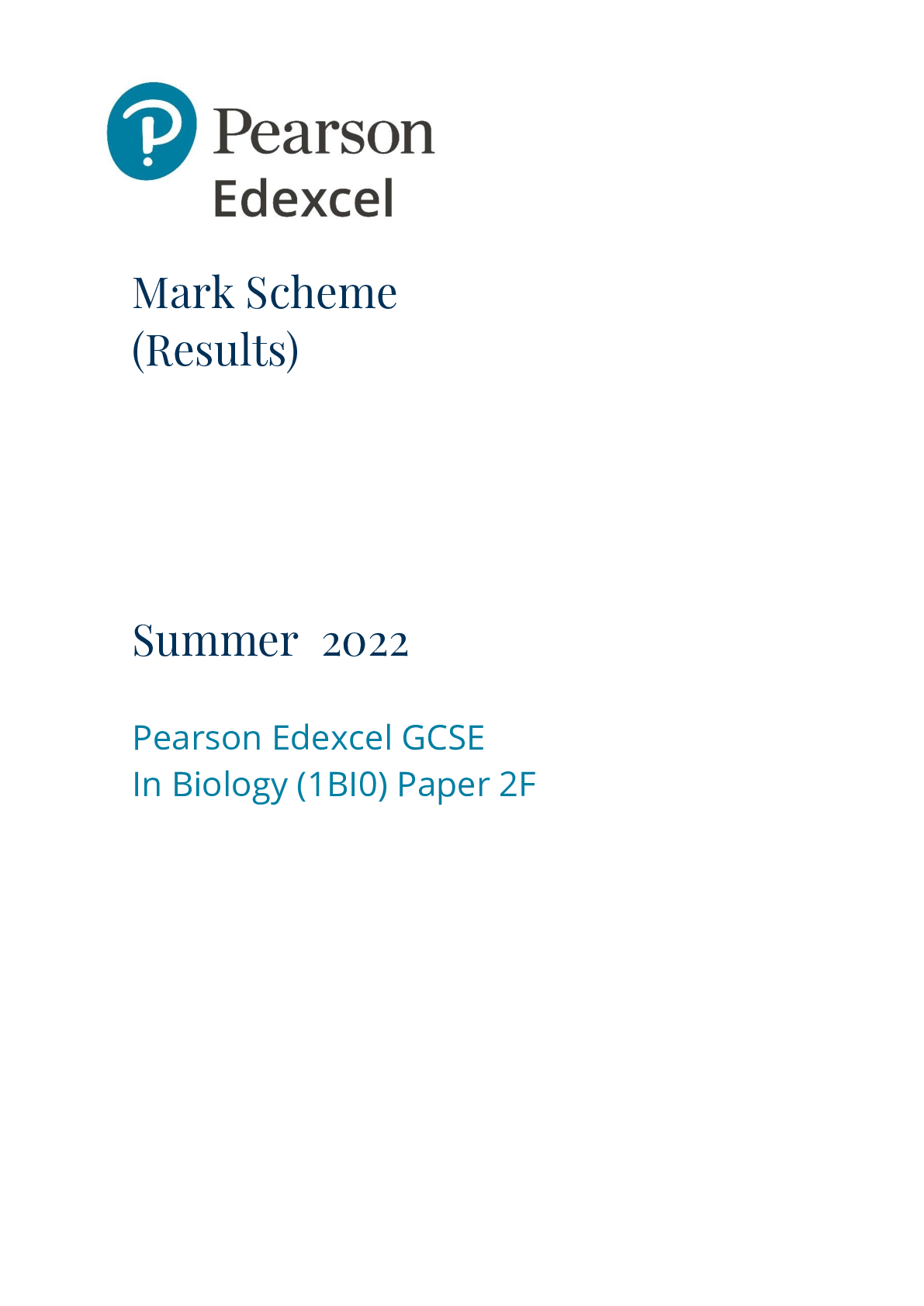
Reviews( 0 )
Document information
Connected school, study & course
About the document
Uploaded On
Apr 03, 2023
Number of pages
31
Written in
Additional information
This document has been written for:
Uploaded
Apr 03, 2023
Downloads
0
Views
104

